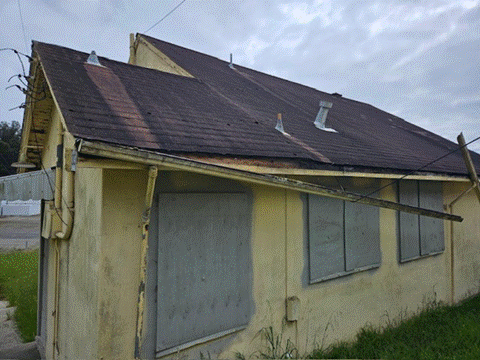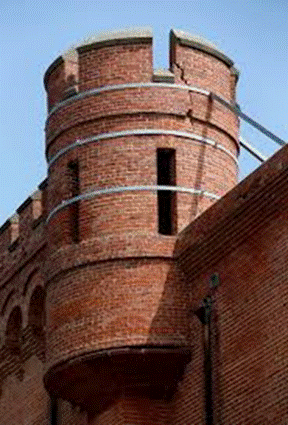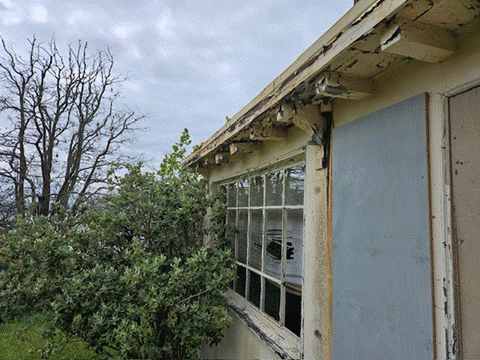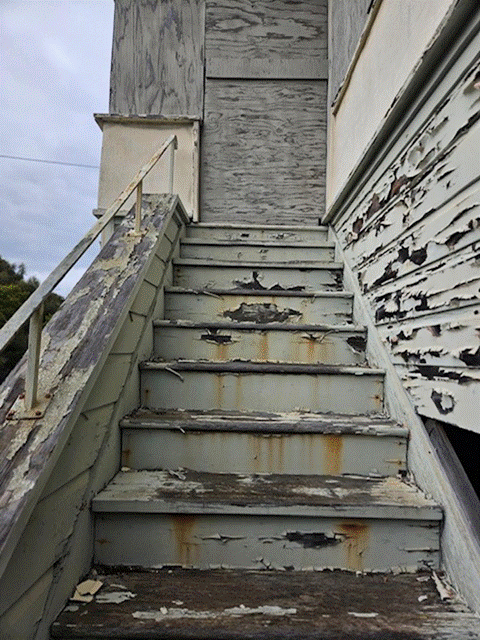
Figure 1 - Deteriorated worker cottage at Winehaven, once home of Italian immigrant winery workers, later US Navy families.
The Winehaven Historic District at Point Molate has been nominated for the 2025 list of America’s 11 Most Endangered Places. See the 2024 list here .
Since 1988, the National Trust has published an annual list of America's 11 Most Endangered Historic Places to raise awareness about the threats facing some of our nation's greatest treasures. The list, which has identified more than 350 sites to date, has proven so successful in galvanizing preservation efforts that only a handful of sites have been lost.
The 11 Most program uplifts and catalyzes community-led preservation work through a high-impact public awareness campaign resulting in increased visibility, public attention, and new resources to save and activate historic places for the public good.
Placement on the list raises public awareness and can be a powerful tool for local advocates to rally support around the country to help save a threatened site.
The National Trust’s annual announcement generates coverage in national media outlets such as NPR, The New York Times, and Associated Press, along with regional and local media outlets. The media spotlight can help amplify local advocacy efforts to save historic places, creating pressure for a change of course. Listing can also help attract new stakeholders and supporters to the cause of saving a threatened historic place.
In some instances, inclusion on the 11 Most list brought endangered sites to the attention of potential new owners or bolstered efforts to attract funding from charitable foundations or individual donors.
The 35 structures in the Winehaven Historic District totaling some 300,000 square feet are nearly 120 years old and have had almost no maintenance for the past 30 years. They continue to deteriorate and may soon be past saving.
Prior to Prohibition, Winehaven was the largest winery in the world and the epicenter of the California Wine Industry, which now generates nearly $90 billion in economic activity. Winehaven was constructed only a year after the City of Richmond was chartered.
At the peak of the season, as many as 400 workers, mostly Italian immigrants, lived at Winehaven, and all of the California Wine Association's shipments to foreign, coastal and New York markets sailed from the Winehaven dock, as much as half a million gallons monthly, including 40 ships that sailed annually for New York alone.
The winery was shut down by Prohibition in 1919, and the company sold off its assets to avoid bankruptcy, but Winehaven had a second life in WWII when the Navy converted it into the main fuel depot for the Pacific Fleet, including the 747 ships built in Richmond at the world’s largest shipyard, now commemorated by Rosie the Riveter WWII Home Front National Historic park.
The fate of Winehaven is now in the hands of multiple public agencies, including the City of Richmond and the East Bay Regional Parks District. The City of Richmon is currently responsible for security and maintenance but has failed to do so.
Its historic role in the California Wine Industry is of statewide importance, and Winehaven must be saved for the benefit of future generations.

Figure 2 - damaged brick at the iconic Winehaven Building 1

Figure 3 - The former Winemaker's Cottage, now badly deteriorated

Figure 4 - These stairs were one someone's front entry.
|

